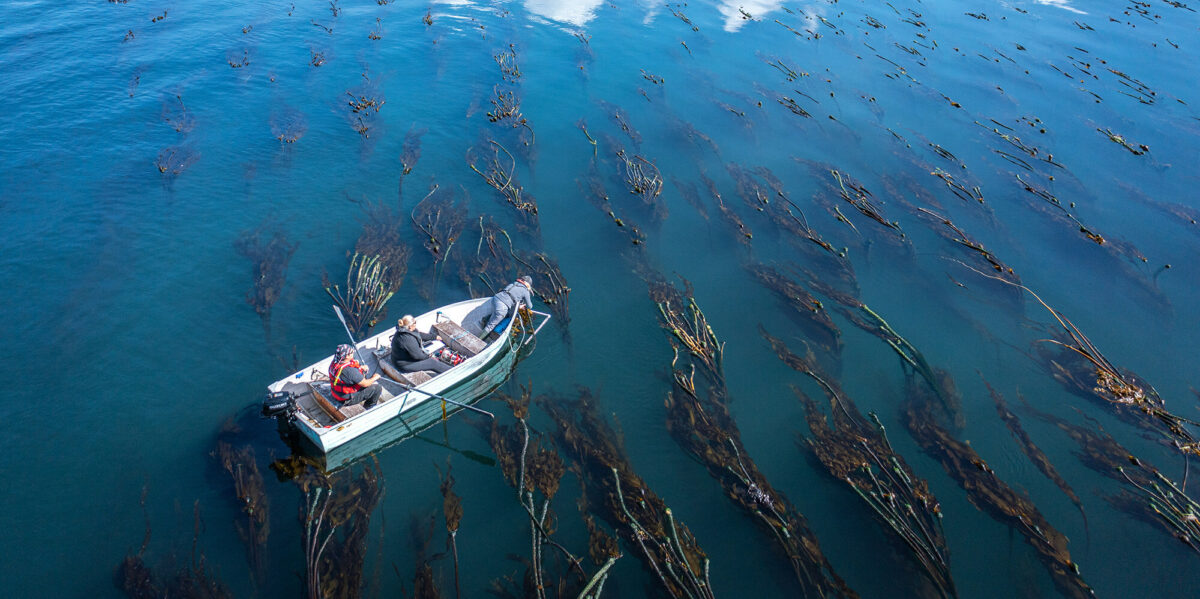Despite decades of destructive logging and fishing practices, the Great Bear Sea supports a globally significant abundance and diversity of life in all shapes, colours and sizes, from microscopic creatures to Earth’s largest animals. Scientific estimates are impressive: trillions of plankton, billions of fish, three million nesting seabirds, 10,000-year-old glass sponge reefs, more than 400 fish species and 29 marine mammal species.
Only a few centuries ago, the entire biosphere was a similarly rich mix of ecosystems and biodiversity. Now the Great Bear Sea is an increasingly rare oasis.
An agreement between 17 Coastal First Nations and the British Columbia and federal governments — the Great Bear Sea Project Finance for Permanence initiative — is the realization of decades of vision, negotiation and collaboration, and will help develop a conservation economy supporting 10 million hectares of culturally and environmentally rich marine ecosystems. Plans include a 2.8-million-hectare network of marine protected areas.
With First Nations leadership and robust financial support from governments and charitable foundations, it’s expected to create 3,000 new jobs and 32,000 days of skills training.
Financial support for long-term stewardship is important, but we can’t keep pinpointing defined areas for protection while ignoring the greater devastation all about.
Throughout history, invasion and colonization of the “new world” has displaced people and cultures that had been in place for thousands of years. Indigenous Peoples are the only ones with a record of living sustainably in place for millennia, and their loss represents a loss of irreplaceable insights and knowledge. Some ancient practices may no longer be practical, but the deeply held recognition that nature is the source of survival and wellbeing must replace the profit-driven resource-extraction mindset.
The Great Bear Sea partnership reflects significant changes in public and institutional understanding of Indigenous cultures and governance practices. It can trace its origins to the initial Great Bear Rainforest agreement of April 2001, when Coastal First Nations worked to protect millions of hectares of coastal temperate rainforest. Then, many Indigenous people thought the Great Bear initiative was incomplete, as the terrestrial and marine ecosystems are inextricably interconnected. After more than two decades, this agreement is a step toward correcting that oversight.
Since the 2001 agreement, Indigenous groups have brought multiple successful challenges to the Supreme Court of Canada, resulting in stronger legal acknowledgement of Indigenous rights and title. Now Indigenous-led protected areas are increasingly common, with First Peoples’ governments in Ontario and the Arctic leading several similar major, financially supported conservation initiatives.
This is in stark contrast to previous generations, when establishing protected areas such as Banff National Park started with forced removal of Indigenous people, preventing them from returning to traditional territories to collect foods and medicines.
Now, instead of being evicted from their homes, Indigenous people are trying to show how to steward the lands and waters in culturally and environmentally responsible ways. We must embrace the perspective that we depend entirely on the natural world for our existence. Combined with the best scientific information on the state of the planet, we must employ that knowledge and governance beyond the Great Beat Sea if we hope to survive as a species.
This agreement comes as people are finally starting to wake up to the fact that human-created institutions (religious, legal, economic, political) are pushing natural systems out of balance. Climate change, overfishing and habitat destruction are undermining food security locally and globally. Coastal First Nations’ stewardship may show how healthy oceans can provide plentiful rich and healthy food for generations. The marine protected areas network planned for the area could help with resiliency against climate change and ensure that people can continue to enjoy nature’s bounty.
As societies grapple to create a world in which future generations can thrive in harmony with nature, Coastal First Nations are offering a way of seeing our place in the world that will move us onto a different path by protecting the biodiversity on which we utterly depend. It’s a huge responsibility.
Their success deserves to be celebrated and emulated throughout Canada and the world. Let’s hope their vision helps reconnect us all to this spectacular small blue planet we all depend on, and that we can shift our understanding in time to halt and then reverse the devastation we’re inflicting on our only home.
David Suzuki is a scientist, broadcaster, author and co-founder of the David Suzuki Foundation. Written with David Suzuki Foundation Senior Communications Specialist Panos Grames.
Learn more at davidsuzuki.org.



